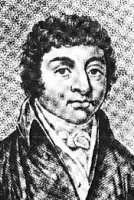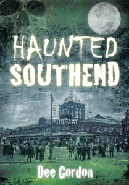Dr James Clark’s Home, Brook Street
The following account concerning a crisis apparition was published by John Ingram in his ‘The Haunted Homes and Family Traditions of Great Britain’(1897). It concerns the home and practice of Dr James Clark (Born 14 December 1788 – Died 29 June 1870) who was Queen Victoria’s physician between 1837 and 1860. Prior to retiring in 1860, Clark was based at 64 Brook Street*.
‘In a work by Mr. H. Spicer, entitled Strange Things Among Us, is related the story we are about to narrate, but with the names of all the persons and places suggested by initial letters only. After no little trouble, we have succeeded in identifying the names implied, and now give the tale in a completed condition. It is stated to have been communicated to the writer by a friend of Lady Clark, from whose own lips the story had been received:
“One morning, some years since, the wife of a ditinguished London physician was in bed, at her house in Brook Street. It was daylight, and she was broad awake. The door opened; but Lady Clark, concluding that it was her maid entering, did not raise her head, until a remarkable-looking figure, passing between her bed and the window, walked up to the fire-place, when, reflected in the mirror which hung above, Lady Clark recognized the features of her step-son, Dr. John Forbes Clark, then attached to a foreign embassy. He wore a long night-dress, and carried something on his arm.
“Good Heavens! Is that you, John, and in that dress?” cried Lady Clark, in the first surprise.
“The figure turned slowly round, and she then became aware that the object he carried was a dead child, the body being swathed round and round in a large Indian scarf of remarkable workmanship, which Lady Clark had presented to Mrs. John Clark on the eve of her departure.
“As she gazed, the outlines of the figure became indistinct, invisible, vanishing in the grey light, or blending with the familiar objects in the room.
“Lady Clark neither fainted nor shrieked, nor even rang the bell. She lay back and thought the matter over, resolving to mention it to no one until the return of her husband, then absent in attendance on an illustrious household. His experience would* decide whether her physical health offered any solution of the phenomenon. As for its being a dream, it may be taken as an accepted fact that, though nobody is conscious of the act of going to sleep, everybody knows by the sudden change of scenery, by the snapping of the chain of thought, and so forth, when he has been sleeping.
“Very shortly after, Sir James returned home. On hearing the story, he immediately looked at the tongue that related such wonders, and likewise felt the lady’s pulse. Both organs perfect. Of her nerves he had seen proof. Touching veracity, she was truth itself. All his skill could devise nothing better than a recommendation to patience, and to see what came of it. In the meantime, the day and hour were noted down, and the next advices from T awaited with more than usual interest.
“At length they came. Dr. John Forbes Clark informed his father that their child, an only one, had died on such a day (that of the apparition), and that his wife, anxious that it should be laid to rest in the land of its birth, had begged that it might be forwarded by the next homeward ship. In due course it arrived, embalmed, but enclosed in a coffin so much larger than was required for the tiny occupant, that the intervening spaces had to be filled up with clothes, while the Indian scarf had been wound, in many folds, around the child’s body.”
* Survey of London: volume 40: The Grosvenor Estate in Mayfair, Part 2 (The Buildings) (1980)




Recent Comments